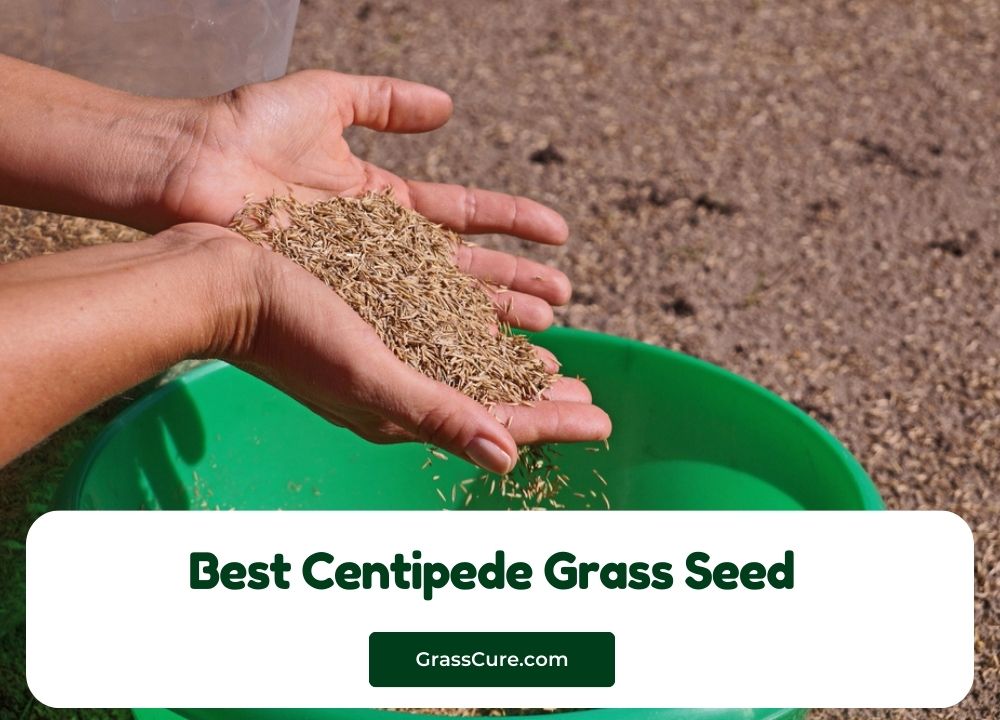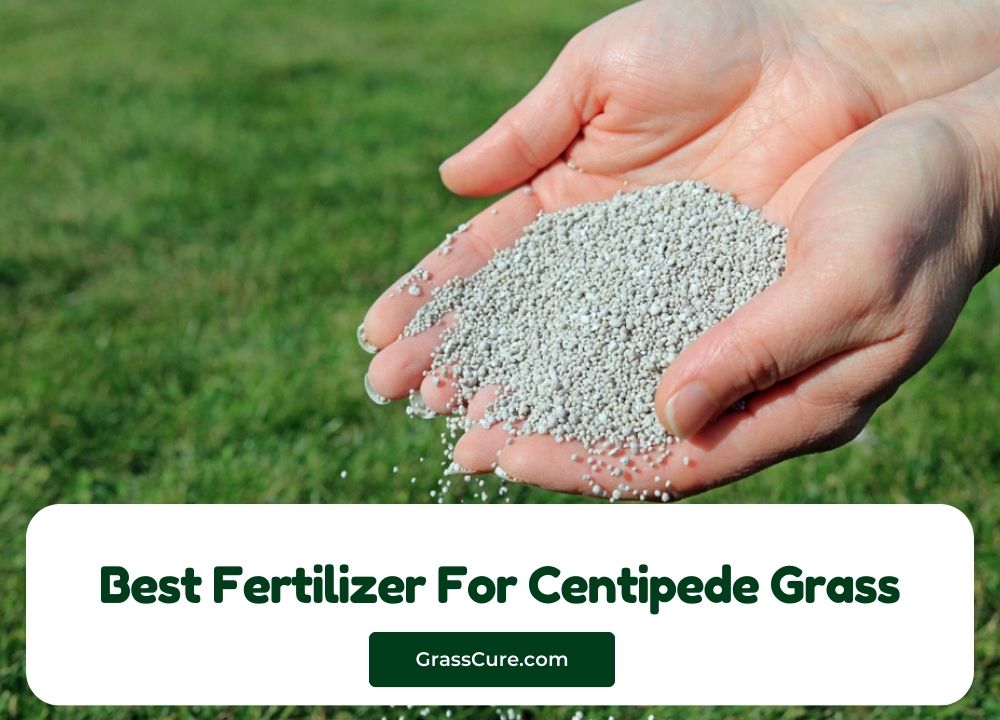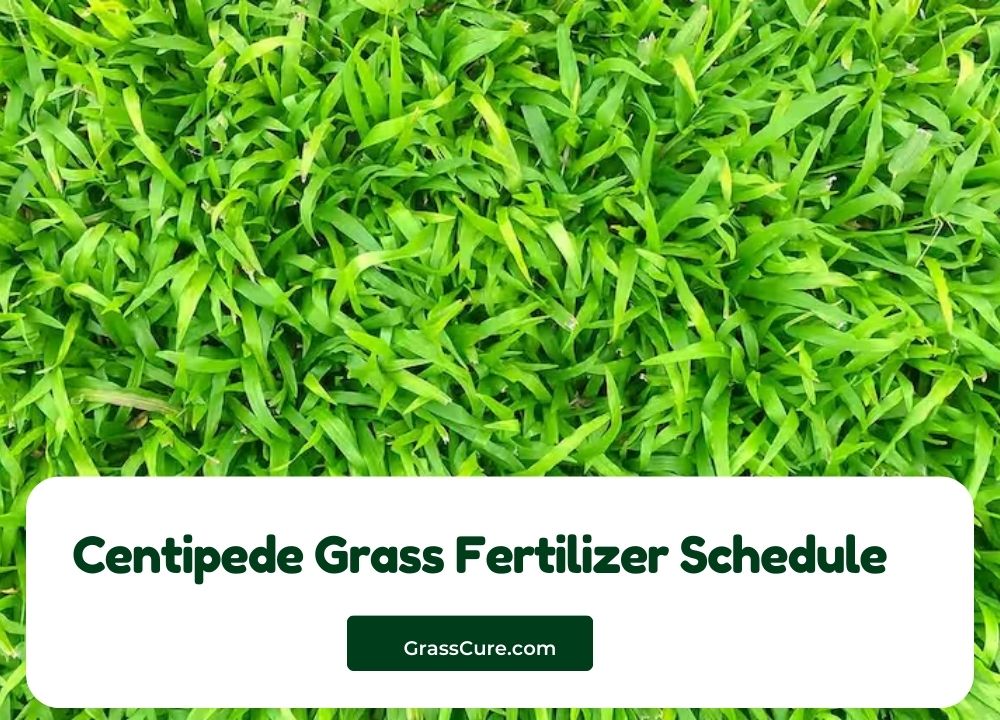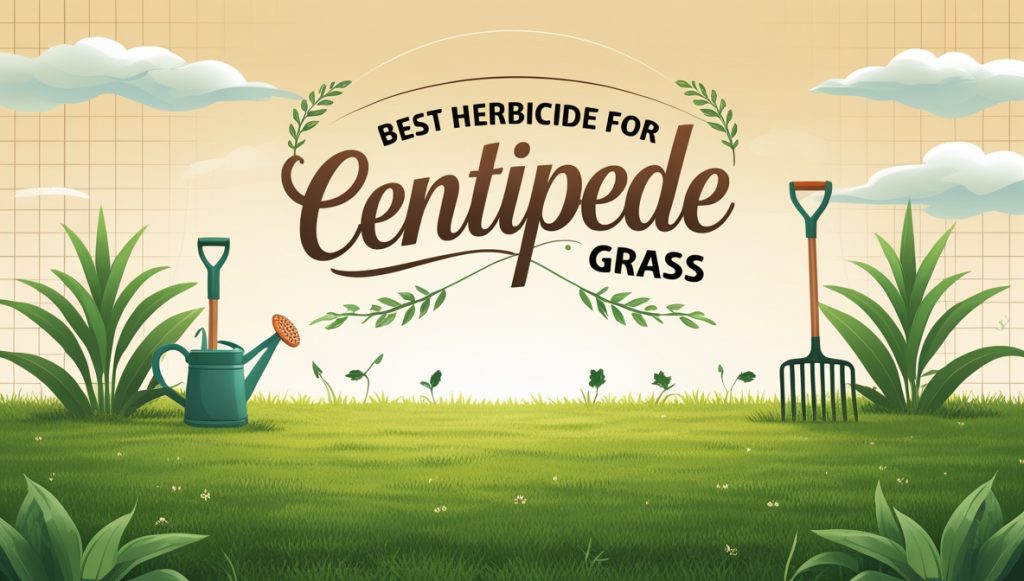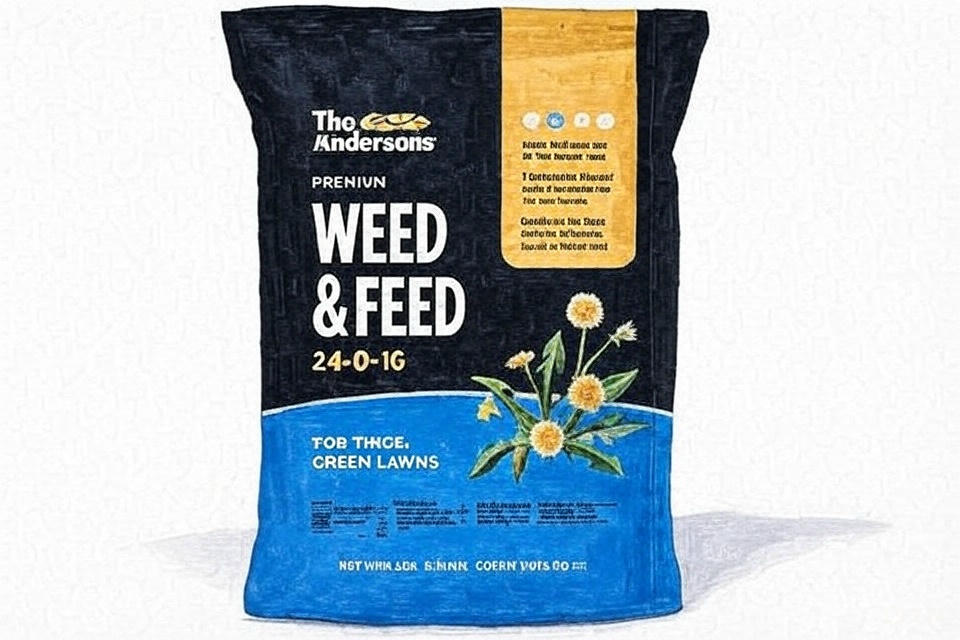Centipede grass (Eremochloa ophiuroides) is a warm-season grass known for its vibrant green color, low maintenance requirements, and ability to thrive in a variety of soil types. Popular in the southeastern United States, centipede grass is an excellent choice for homeowners seeking a lush lawn without the burdens of extensive upkeep. Its distinctive growth habit, characterized by broad, flat blades and a coarse texture, makes it visually appealing while also contributing to its resilience in warm climates.
Choosing the right seed is crucial for establishing a healthy lawn. Not all centipede grass seeds are created equal; factors such as seed quality, climate adaptability, and growth habits can significantly impact the success of your lawn. High-quality seeds will not only germinate effectively but also exhibit resilience against pests, diseases, and adverse environmental conditions. This article aims to guide readers through the process of selecting the best centipede grass seed, considering various factors and presenting top-rated brands to help achieve a lush, green lawn.
Contents
Types of Centipede Grass
Centipede grass (Eremochloa ophiuroides) is a warm-season grass variety that is popular for lawns, especially in the southeastern United States due to its heat tolerance and low maintenance requirements. There are several cultivars of centipede grass, each with its own characteristics. Here are some common types of centipede grass:
Common Centipede Grass: This is the most widely used and recognized variety. It has a medium-green color and a medium texture. It’s known for its low-maintenance requirements but may not be as cold-tolerant as some other varieties.
TifBlair Centipede: TifBlair is a patented variety of centipede grass that is more cold-tolerant than the common type. It’s often used in slightly colder regions than other centipede grass varieties.
TifCote Centipede: TifCote is a newer centipede grass variety that is known for its improved drought tolerance compared to the common variety. It has a finer texture and a more uniform appearance.
AU Centennial: This is another cold-tolerant centipede grass variety. It is known for its dark green color and its ability to withstand colder temperatures compared to common centipede grass.
Oaklawn Centipede: Oaklawn is a variety that is often chosen for its good drought tolerance and low-maintenance characteristics. It has a fine texture and a medium green color.
Covington Centipede: Covington is a cold-tolerant variety with a medium texture. It is known for its dark green color and is suitable for areas with colder winters.
Santee Centipede: Santee is a newer variety with good heat and drought tolerance. It has a fine texture and a medium green color.
Seville Centipede: Seville is a variety that is known for its dark green color and good disease resistance. It has a finer texture compared to common centipede grass.
When choosing a type of centipede grass for your lawn, consider factors such as your climate, soil type, and specific lawn care needs. Different varieties may perform better in certain conditions, so it’s important to select the one that suits your region and preferences best.
Choosing the top centipede grass seed
Since the centipede grass is a resistant grass with many extra features, when choosing the seeds, you should focus on aspects that enhance their natural features. Below is a list of the best options to consider.
1. Gulf Kist Centipede Grass Seed for a Dense Green Lawn
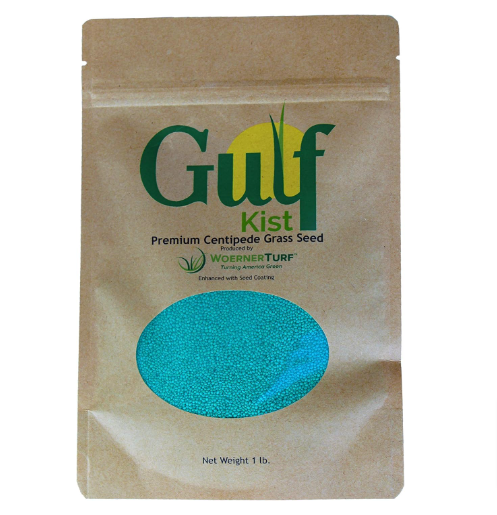
For homeowners looking to establish a lush, green lawn without the hassle of extensive maintenance, a top contender is the Centipede Grass Seed for a Dense Green Lawn. This product offers numerous benefits tailored for southern and southeastern U.S. climates.
Coated Seeds for Enhanced Germination: The 1 lb bag features coated seeds designed to improve germination rates and protect the seeds from pests and diseases. This coating allows for better moisture retention and facilitates easier planting, ensuring that you get the best possible start for your lawn.
Sun and Moderate Shade Tolerance: This centipede grass variety is versatile, thriving in both sunny and partially shaded areas. This adaptability makes it an excellent choice for diverse landscapes, from open yards to shaded gardens.
Low Fertilizer and Low Maintenance Requirements: One of the standout features of this centipede grass seed is its minimal fertilization needs. It requires less nitrogen compared to other grass types, making it an eco-friendly choice that helps save on lawn care costs. Once established, centipede grass grows slowly, reducing the frequency of mowing and allowing homeowners to enjoy a beautiful lawn without constant upkeep.
Ideal for Lawn Seeding and Turf Patch Repair: Whether you’re starting a new lawn or repairing an existing one, this centipede grass seed is perfect for both applications. Its ability to establish quickly and create a dense turf makes it an ideal choice for patching bare spots and enhancing the overall appearance of your lawn.
Best for Southern and Southeastern U.S.: Specifically formulated for the warmer climates of the southern and southeastern United States, this grass seed is well-suited to thrive in the region’s heat and humidity, providing a resilient and attractive lawn.
Pros:
- Low Maintenance: Requires less mowing and fewer inputs compared to other grass types, saving time and resources.
- Adaptable: Thrives in both full sun and moderate shade, making it suitable for a variety of landscapes.
- Minimal Fertilization Needs: Eco-friendly and cost-effective, requiring less nitrogen for healthy growth.
- Quick Establishment: Coated seeds enhance germination rates, allowing for faster lawn establishment and effective patching.
Cons:
- Slow Growth Rate: While beneficial for maintenance, the slower growth rate can delay the establishment of a thick lawn.
- Limited Cold Tolerance: Not suitable for cooler climates or areas outside of USDA zones 7-10.
- Weed Competition: May require additional care to manage weeds during the establishment phase, as slow growth can allow weeds to take hold.
This centipede grass seed offers a combination of ease of use, adaptability, and low-maintenance care, making it a top choice for homeowners seeking a dense, green lawn without the need for mulch or excessive resources.
2. Certified TifBlair Centipede Grass Seed – Direct from The Farm
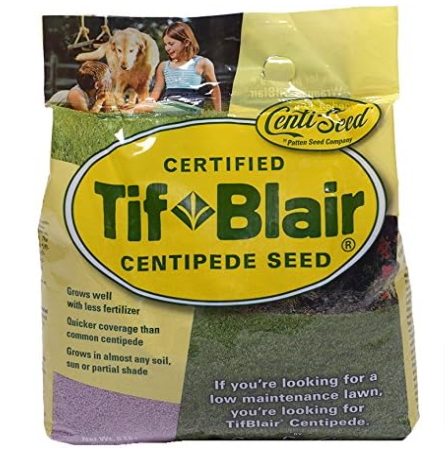
TifBlair Centipede Grass is a popular choice among homeowners and landscapers alike for its exceptional adaptability and low-maintenance requirements. Sold in a convenient 5 lb package, this seed variety is directly sourced from the farm, ensuring freshness and quality for optimal lawn establishment.
Premium Quality Seed: TifBlair is known for its high-quality, disease-resistant seeds that provide superior germination rates. Sourced directly from the farm, these seeds ensure you are getting the best for your lawn.
Enhanced Establishment: TifBlair Centipede Grass is designed for rapid establishment, allowing homeowners to enjoy a green lawn in less time. This variety is particularly known for its ability to create a dense, carpet-like turf.
Sun and Shade Tolerance: Like other centipede varieties, TifBlair performs well in full sun but is also tolerant of moderate shade, making it versatile for various landscape settings.
Low Fertilizer Requirements: This centipede grass type thrives on minimal fertilization, which not only reduces the cost of lawn care but also contributes to environmental sustainability.
Durability: TifBlair Centipede Grass is known for its resilience against heat and drought conditions, making it an excellent choice for southern climates.
Pros:
- High Germination Rates: Premium quality seed ensures better establishment and growth.
- Low Maintenance: Requires minimal mowing and fertilization, making it suitable for busy homeowners.
- Versatile: Adaptable to a variety of sunlight conditions, thriving in both sunny and partially shaded areas.
- Quick Establishment: Designed for faster growth, allowing for quicker results in lawn coverage.
Cons:
- Slow Recovery: While it establishes quickly, the recovery from heavy wear or damage may take longer compared to some other grass types.
- Limited Cold Tolerance: Best suited for USDA zones 7-10, not ideal for regions with colder winters.
- Weed Competition: Requires diligence in managing weeds during establishment, as the grass can be slow to spread initially.
TifBlair Centipede Grass Seed (5 lb.) is an excellent option for those seeking a high-quality, low-maintenance lawn. Its resilience, adaptability, and fast establishment make it a top choice for homeowners in warmer climates looking to enhance their outdoor spaces.
3. Scotts EZ Seed Patch and Repair Centipede Grass

Scotts EZ Seed Patch & Repair is a convenient solution for homeowners looking to rejuvenate their lawns quickly and effectively. This product is designed for both sunny and shady areas, making it a versatile choice for patching bare spots and repairing damaged turf.
Easy Application: The unique formula combines seed, fertilizer, and mulch in one easy-to-use product. This all-in-one solution simplifies the process of lawn repair, allowing for quick and hassle-free application.
Coverage Area: One 3.75-pound bag can cover up to 85 square feet, making it an ideal choice for small patches or larger repair areas. The coverage area makes it perfect for targeted applications where grass is sparse or damaged.
Sun and Shade Tolerance: This seed mix is designed to thrive in both sunny and shaded conditions, ensuring that you can successfully repair patches in a variety of environments. This versatility makes it suitable for diverse lawn settings.
Moisture Retention: The mulch included in the mix helps retain moisture, providing the seeds with the necessary hydration for successful germination. This feature is especially beneficial in dry conditions or during hot summer months.
Quick Germination: Scotts EZ Seed is formulated for rapid germination, allowing homeowners to see results quickly. This fast establishment means that your lawn can return to its full beauty in no time.
Pros:
- All-in-One Formula: The combination of seed, fertilizer, and mulch simplifies the repair process and ensures better results.
- Versatile Coverage: Suitable for both sunny and shady areas, making it an excellent choice for various lawn types.
- Moisture Retention: The mulch aids in moisture retention, promoting faster germination and establishment.
- Fast Results: Designed for quick germination, providing homeowners with rapid lawn recovery.
Cons:
- Cost: Higher price point compared to traditional grass seed options, which may be a consideration for budget-conscious homeowners.
- Limited Coverage: While it covers up to 85 sq. ft., larger areas may require multiple bags, potentially increasing costs.
- Specific Use: Primarily designed for patching and repair rather than complete lawn establishment, which may limit its use for new lawns.
Scotts EZ Seed Patch & Repair Sun and Shade (3.75 lbs) is a user-friendly solution for homeowners looking to quickly address bare spots and lawn damage. Its all-in-one formula and rapid germination make it a practical choice for effective lawn care in various conditions.
4. Lawnifi Santee Centipede Grass Seeds for Lawn, 2 lbs Covers 4,000 Sq Ft

Lawnifi Santee Centipede Grass Seeds are a fantastic option for homeowners aiming to establish a beautiful, low-maintenance lawn. With a coverage area of up to 4,000 square feet per 2-pound bag, this seed variety is designed for efficient lawn establishment in warm climates.
Extensive Coverage: Each 2-pound bag can cover an impressive 4,000 square feet, making it ideal for larger lawns or for those who want to overseed existing grass. This expansive coverage ensures you get excellent value for your investment.
High-Quality Seed: Lawnifi Santee seeds are carefully selected for their quality and performance. Known for their resilience and durability, these seeds are formulated to thrive in the warm climates of the southern U.S., particularly in USDA zones 7-10.
Low Maintenance: One of the main benefits of Santee centipede grass is its low-maintenance requirements. This grass type thrives on minimal fertilization and mowing, making it perfect for busy homeowners who want a lush lawn without the constant upkeep.
Drought Tolerance: Santee Centipede grass exhibits good drought resistance, allowing it to withstand dry conditions once established. This feature makes it an excellent choice for areas prone to heat and limited water availability.
Sun and Shade Adaptability: This grass variety performs well in full sun but can also tolerate moderate shade, providing versatility for various landscaping scenarios.
Pros:
- Extensive Coverage: Covers up to 4,000 square feet, making it suitable for large lawns or overseeding.
- High-Quality Seed: Sourced for superior performance, resulting in a lush and resilient lawn.
- Low Maintenance: Requires minimal care, including less frequent mowing and fertilization.
- Drought Resistant: Withstands dry conditions well, making it ideal for warmer climates.
Cons:
- Slow Establishment: While it covers large areas, centipede grass can take time to establish fully, requiring patience from homeowners.
- Limited Cold Hardiness: Best suited for warm climates and may struggle in regions with colder winters or frosty conditions.
- Weed Competition: During the establishment phase, it may be vulnerable to weed competition, requiring careful management.
Lawnifi Santee Centipede Grass Seeds (2 lbs) provide a practical solution for homeowners seeking an expansive, low-maintenance lawn. Its adaptability, drought tolerance, and coverage make it a top choice for those looking to enhance their outdoor spaces efficiently.
5. Hancock’s Centipede Grass Seed – Coated – 2 lbs.
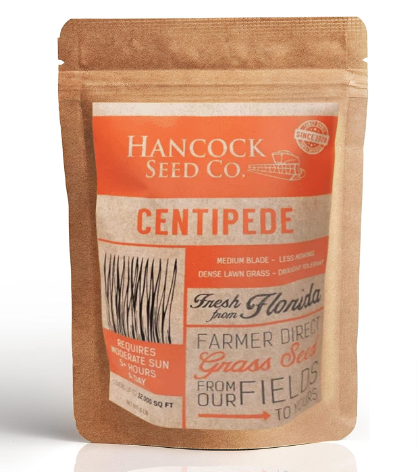
Hancock’s Centipede Grass Seed offers a premium option for homeowners looking to establish a lush, low-maintenance lawn. With its coated seeds, this product ensures optimal germination and resilience, making it an excellent choice for warm-season turf.
Coated Seeds for Enhanced Germination: The coating on Hancock’s seeds helps protect them from pests and diseases while improving moisture retention. This feature promotes better germination rates, ensuring a successful lawn establishment.
Quality and Performance: Hancock’s Centipede Grass is sourced for its high quality, providing a hardy and durable lawn that thrives in southern climates. This grass variety is well-known for its ability to grow well in sandy and acidic soils, which are common in many southern regions.
Low Maintenance Requirements: Hancock’s Centipede Grass is ideal for homeowners who prefer a low-maintenance lawn. It requires minimal mowing and fertilization, allowing you to enjoy a beautiful lawn without the extensive upkeep.
Adaptability: This grass variety performs well in a range of sunlight conditions, making it suitable for both sunny and partially shaded areas. Its versatility allows it to thrive in various lawn settings.
Drought Tolerance: Once established, Hancock’s Centipede Grass exhibits good drought resistance, making it a practical choice for regions with fluctuating rainfall.
Pros and Cons
Pros:
- Coated for Better Germination: The seed coating enhances germination rates and protects against pests and diseases.
- High Quality: Sourced for performance, leading to a robust and resilient lawn.
- Low Maintenance: Requires less mowing and fertilization, making it suitable for busy homeowners.
- Versatile Growth: Adapts well to different sunlight conditions, thriving in both sun and shade.
Cons:
- Slow Establishment: While hardy, centipede grass can take longer to establish compared to faster-growing grass types, requiring patience.
- Limited Cold Hardiness: Best suited for USDA zones 7-10, it may not perform well in colder climates.
- Weed Competition: During establishment, the grass may be vulnerable to weed growth, necessitating vigilant weed management.
Hancock’s Centipede Grass Seed – Coated (2 lbs) provides a reliable solution for homeowners seeking to create a beautiful, low-maintenance lawn. Its coated seeds enhance germination and resilience, making it a top choice for warm-season grass in southern regions.
6. Pennington Centipede Seed/Mulch
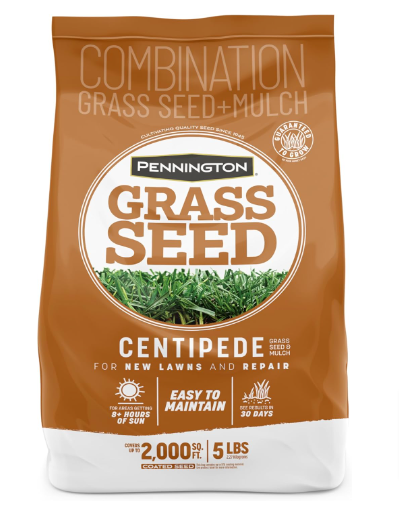
Pennington Centipede Grass Seed & Mulch offers a convenient solution for homeowners looking to establish a lush lawn with minimal effort. This product combines high-quality centipede grass seeds with a mulch layer designed to enhance germination and moisture retention, making it an excellent choice for warm-season grass enthusiasts.
All-in-One Formula: The 5-pound bag contains both centipede grass seeds and mulch, streamlining the seeding process. This combination helps to ensure better seed-to-soil contact and moisture retention, promoting healthy growth.
Coverage Area: This product typically covers up to 1,000 square feet, making it suitable for patching small areas or overseeding existing lawns.
Ease of Use: The mulch helps protect the seeds from pests and environmental stressors, making it easier for homeowners to achieve successful germination without extensive prior preparation.
Drought Tolerance: Once established, centipede grass is known for its drought resistance. This product allows homeowners to create a lawn that thrives with minimal watering, which is particularly beneficial in regions with variable rainfall.
Low Maintenance: Pennington Centipede Grass requires minimal fertilization and mowing, making it an excellent choice for busy homeowners who want a beautiful lawn without a lot of upkeep.
Pros:
- All-in-One Convenience: The combination of seed and mulch simplifies the seeding process and enhances germination rates.
- Sufficient Coverage: Covers up to 1,000 square feet, making it suitable for small patches or overseeding.
- Drought Resistant: Once established, it can tolerate dry conditions, reducing the need for frequent watering.
- Low Maintenance Requirements: Requires less fertilization and mowing, ideal for busy lifestyles.
Cons:
- Limited Coverage Area: While sufficient for small patches, larger lawns may require multiple bags for full coverage.
- Mulch Material: Depending on the mulch composition, it may break down over time, necessitating occasional reseeding.
- Slow Establishment: Centipede grass can take longer to establish compared to faster-growing grass types, requiring patience.
Pennington Centipede Grass Seed & Mulch (5 LB) provides a practical and efficient solution for homeowners looking to establish a low-maintenance lawn. Its all-in-one formula enhances germination and supports the development of a resilient and vibrant outdoor space.
Factors to Consider When Choosing Centipede Grass Seed
Selecting the right centipede grass seed involves several critical factors that can influence the health and appearance of your lawn. Understanding these factors will help you make an informed decision tailored to your specific needs and environment.
Climate Adaptability
- Best Regions for Centipede Grass: Centipede grass thrives in warm, humid climates, making it ideal for the southeastern United States. It is well-suited for USDA hardiness zones 7-10.
- Temperature and Moisture Requirements: This grass variety grows best in temperatures between 75°F and 95°F. It prefers moderate rainfall but can tolerate drought conditions once established.
Seed Quality
- Certification and Germination Rates: Look for seeds that are certified by organizations such as the Association of Official Seed Analysts (AOSA). A high germination rate (ideally above 85%) indicates quality seed that is likely to establish quickly.
- Disease Resistance: Choose seeds that are bred for disease resistance, particularly against common issues like nematodes and gray leaf spot. This can save time and resources in lawn care.
Growth Habits
- Mowing Height and Frequency: Centipede grass typically requires mowing at a height of 1 to 2 inches. Understanding its growth habit will help determine how often you need to mow to maintain a healthy lawn.
- Growth Rate and Spread: Centipede grass has a slower growth rate compared to other grass types, which can be beneficial for low-maintenance lawns. However, it also means that it may take longer to establish a thick lawn.
Maintenance Requirements
- Fertilization Needs: Centipede grass is relatively low in nutrient requirements, needing only minimal fertilization. Look for seeds that specify minimal fertilization needs to keep your lawn healthy without excessive inputs.
- Pest and Weed Control: Understanding the common pests and weeds that affect centipede grass can help you choose seeds that are less susceptible to infestations. Consider seeds with built-in pest resistance or those that work well with integrated pest management (IPM) practices.
Comparison of the Best Centipede Grass Seed Options
When selecting the best centipede grass seed for your lawn, it’s important to consider various factors such as coverage area, maintenance requirements, adaptability, and overall performance. Below is a comparison of the top centipede grass seed options discussed in this article.
| Product | Coverage Area | Seed Type | Coated | Sun/Shade Tolerance | Drought Resistance | Maintenance Level | Pros | Cons |
| Centipede Grass Seed for a Dense Green Lawn | Up to 1,000 sq. ft. | Coated | Yes | Sun and Moderate Shade | Moderate | Low | Easy application; quick establishment | Limited coverage; may require overseeding |
| TifBlair Centipede Grass Seed | Up to 1,000 sq. ft. | High-Quality Seed | Yes | Sun and Moderate Shade | Good | Low | High germination; drought tolerant | Slow recovery from wear |
| Scotts EZ Seed Patch & Repair | Up to 85 sq. ft. | Seed/Fertilizer/Mulch | Yes | Sun and Moderate Shade | Moderate | Low | All-in-one formula; fast results | Higher cost; limited coverage |
| Lawnifi Santee Centipede Grass Seeds | Up to 4,000 sq. ft. | High-Quality Seed | No | Sun and Moderate Shade | Good | Low | Extensive coverage; drought-resistant | Slow establishment; limited cold tolerance |
| Hancock’s Centipede Grass Seed – Coated | Up to 1,000 sq. ft. | Coated | Yes | Sun and Moderate Shade | Good | Low | High quality; protects seeds from pests | Slow establishment; weed competition |
Summary of Comparison
- Coverage Area: Lawnifi Santee Centipede Grass Seeds stand out for their extensive coverage of up to 4,000 square feet, making them ideal for larger lawns. In contrast, the other options cover less area, making them better suited for patching or smaller spaces.
- Seed Quality: TifBlair and Lawnifi Santee offer high-quality seeds that ensure better performance and resilience. Hancock’s coated seeds also provide enhanced germination rates and protection from pests.
- Coated vs. Uncoated: The coated seeds of products like Hancock’s and the Dense Green Lawn option enhance germination and moisture retention. Uncoated seeds, like those from Lawnifi Santee, can still perform well but may require more attention during establishment.
- Sun/Shade Adaptability: All options provide good adaptability to various light conditions, thriving in both sunny and partially shaded areas. This versatility allows homeowners to use these seeds in diverse landscapes.
- Drought Resistance: Most options offer good drought resistance, with TifBlair and Lawnifi Santee being particularly noted for their ability to withstand dry conditions.
- Maintenance Level: All products are designed for low maintenance, making them suitable for homeowners seeking a lush lawn with minimal effort.
The best centipede grass seed for you will depend on your specific lawn needs, such as coverage area, maintenance preferences, and environmental conditions. By considering the unique features of each option, you can select the perfect centipede grass seed to achieve a vibrant, healthy lawn.
How to Establish and Care for Centipede Grass
Establishing and caring for centipede grass requires some attention to detail, but with the right approach, you can achieve a lush and healthy lawn. Here’s a step-by-step guide on how to properly establish and maintain centipede grass.
Preparing the Soil
- Soil Testing: Before planting, test the soil to determine its pH and nutrient levels. Centipede grass thrives in slightly acidic soil with a pH of 5.5 to 6.5.
- Amendments: Based on the soil test results, you may need to amend the soil with lime to raise the pH or sulfur to lower it. Incorporate organic matter, such as compost, to improve soil structure and drainage.
Selecting the Right Time to Plant
- Ideal Planting Season: The best time to plant centipede grass seed is in late spring to early summer when soil temperatures are consistently above 65°F (18°C). This timing allows the seeds to germinate and establish before the heat of summer.
Sowing the Seeds
- Seed Rate: Follow the recommended seeding rate for the specific product you are using. Typically, centipede grass requires about 1 to 2 pounds of seed per 1,000 square feet.
- Method: Use a broadcast spreader for even distribution of seeds. Lightly rake the area after sowing to ensure good seed-to-soil contact.
- Mulching (if needed): Applying a light layer of straw or mulch can help retain moisture and protect the seeds from birds.
Watering
- Initial Watering: Water the area immediately after sowing to moisten the soil. Keep the soil consistently moist (but not soggy) during the germination period, which typically takes 14 to 21 days.
- Post-Germination: Once the grass is established, reduce watering to about 1 inch per week, depending on rainfall and environmental conditions.
Fertilization
- Low Fertilizer Needs: Centipede grass requires minimal fertilization. Use a slow-release nitrogen fertilizer in early spring (about 1 pound of nitrogen per 1,000 square feet) to support healthy growth.
- Avoid Over-Fertilization: Excess nitrogen can lead to excessive growth and increased vulnerability to pests and diseases.
Mowing
- Mowing Height: Mow centipede grass at a height of 1 to 2 inches to promote a healthy lawn. Avoid cutting more than one-third of the grass height at a time to prevent stress on the grass.
- Mowing Frequency: Mow as needed, typically every 1 to 2 weeks during the growing season.
Weed Control
- Pre-emergent Herbicides: Apply a pre-emergent herbicide in early spring to prevent weed seeds from germinating. Be sure to choose a product that is safe for centipede grass.
- Manual Weeding: Hand-pull or spot-treat any visible weeds to prevent them from taking over your lawn.
Pest and Disease Management
- Monitoring: Regularly inspect your lawn for signs of pests or diseases. Common pests include grubs and chinch bugs, while diseases can include brown patch and dollar spot.
- Integrated Pest Management: Use an integrated approach for pest management, including cultural practices, biological control, and targeted pesticide applications when necessary.
Seasonal Care
- Fall Preparation: In late fall, mow the grass to a height of 1 to 2 inches before winter dormancy. Avoid heavy foot traffic on the lawn during this time to prevent damage.
- Spring Wake-Up: In early spring, once temperatures begin to rise, resume watering and fertilization to encourage growth.
By following these steps, you can establish and maintain a healthy centipede grass lawn that will provide beauty and enjoyment for years to come. With its low-maintenance requirements and resilience, centipede grass is an excellent choice for homeowners seeking a vibrant outdoor space.
Frequently Asked Questions (FAQs)
1. What is centipede grass?
Centipede grass is a warm-season grass known for its low maintenance and ability to thrive in warm, humid climates. It has a fine texture and forms a dense, carpet-like lawn, making it a popular choice for homeowners in the southern United States.
2. How do I know if centipede grass is right for my lawn?
Centipede grass is best suited for USDA hardiness zones 7-10. If you live in a warm climate with acidic soil, centipede grass can be an excellent choice. It performs well in sunny and partially shaded areas, making it versatile for various landscapes.
3. When is the best time to plant centipede grass seeds?
The ideal time to plant centipede grass seeds is in late spring to early summer when soil temperatures consistently reach above 65°F (18°C). This timing allows for optimal germination and establishment before the heat of summer.
4. How do I prepare my lawn for centipede grass?
To prepare your lawn, conduct a soil test to determine pH and nutrient levels. Amend the soil as needed, then remove any existing weeds or debris. Ensure the soil is well-drained and aerated for optimal seed germination.
5. How much water does centipede grass need?
During the germination phase, keep the soil consistently moist but not soggy. Once established, centipede grass generally requires about 1 inch of water per week, depending on rainfall and environmental conditions.
6. Does centipede grass require a lot of fertilization?
Centipede grass has low fertilizer requirements. A slow-release nitrogen fertilizer applied in early spring is usually sufficient. Avoid over-fertilizing, as excessive nitrogen can lead to vulnerability to pests and diseases.
7. How often should I mow centipede grass?
Mow centipede grass every 1 to 2 weeks during the growing season, maintaining a height of 1 to 2 inches. Avoid cutting more than one-third of the grass height at a time to prevent stress on the lawn.
8. What are common pests and diseases that affect centipede grass?
Common pests include grubs, chinch bugs, and armyworms. Diseases such as brown patch and dollar spot can also occur. Regular monitoring and integrated pest management practices can help keep your lawn healthy.
9. Can centipede grass survive in shady areas?
Yes, centipede grass can tolerate moderate shade, but it thrives best in full sun. If your lawn receives limited sunlight, you may want to consider mixing in other grass types that perform better in shade.
10. How can I revive a struggling centipede grass lawn?
To revive a struggling centipede grass lawn, first assess the underlying issues such as poor soil quality, improper watering, or pest problems. Aerate the soil, reseed any bare patches, and ensure proper care, including adequate watering and fertilization.
By addressing these frequently asked questions, you can help homeowners better understand centipede grass and make informed decisions about establishing and caring for their lawns.
Conclusion
Centipede grass is an excellent choice for homeowners seeking a low-maintenance, resilient lawn that thrives in warm climates. With its unique ability to adapt to various sunlight conditions and its minimal fertilization and watering needs, centipede grass provides a lush, green landscape with less effort.
When selecting the best centipede grass seed, consider factors such as coverage area, seed quality, and adaptability to your specific environment. Options like Lawnifi Santee Centipede Grass Seeds and Hancock’s Coated Centipede Grass Seed stand out for their performance and ease of establishment.
Establishing and caring for centipede grass involves proper soil preparation, timely planting, consistent watering, and minimal fertilization. By following the recommended practices and addressing common issues like pests and diseases, you can achieve a vibrant lawn that enhances the beauty of your outdoor space.
Whether you’re starting fresh or looking to patch bare spots in your existing lawn, centipede grass is a reliable choice that can provide you with years of enjoyment and a stunning landscape. With the right knowledge and care, you can create a healthy, resilient lawn that is the envy of the neighborhood.
References
- University of Florida Institute of Food and Agricultural Sciences. (2021). Centipedegrass – A Warm-Season Turfgrass. Retrieved from https://edis.ifas.ufl.edu/ep446
- North Carolina State University Extension. (2020). Centipede Grass. Retrieved from https://content.ces.ncsu.edu/centipede-grass
- The Ohio State University Extension. (2019). Grass Types for Ohio Lawns. Retrieved from https://ohioline.osu.edu/factsheet/hyg-1030
- Texas A&M AgriLife Extension. (2018). Choosing the Right Grass for Your Lawn. Retrieved from https://aggieturf.tamu.edu/
- U.S. Department of Agriculture Natural Resources Conservation Service. (2022). Grass Seed Varieties. Retrieved from https://www.nrcs.usda.gov/
- Scotts Miracle-Gro. (n.d.). How to Grow and Maintain Centipede Grass. Retrieved from https://www.scotts.com/en-us/library/lawn-care/centipede-grass
- The Lawn Institute. (2021). Lawn Care Basics: Centipede Grass. Retrieved from https://www.thelawninstitute.org/
- Mississippi State University Extension Service. (2019). Centipedegrass for Lawns. Retrieved from https://extension.msstate.edu/publications/centipedegrass-lawns
